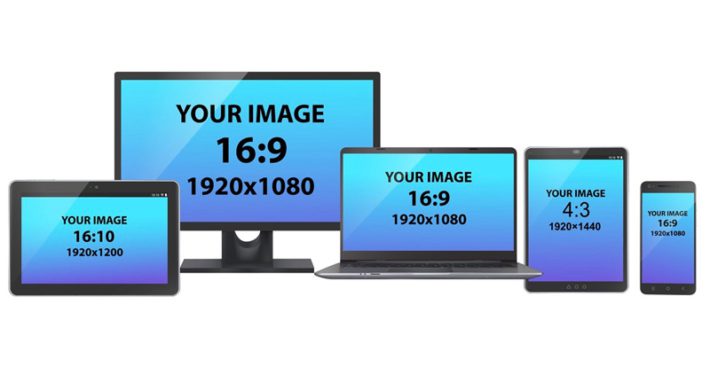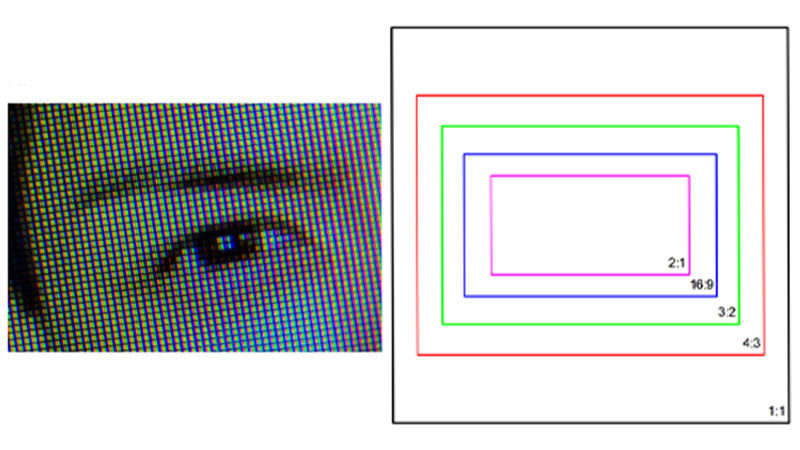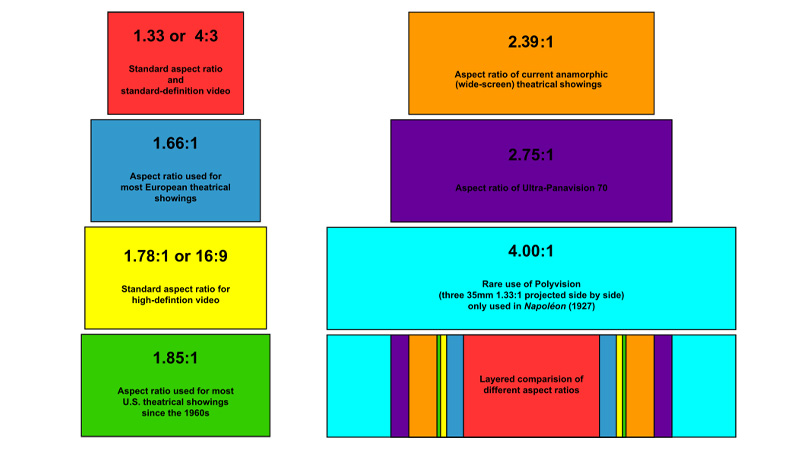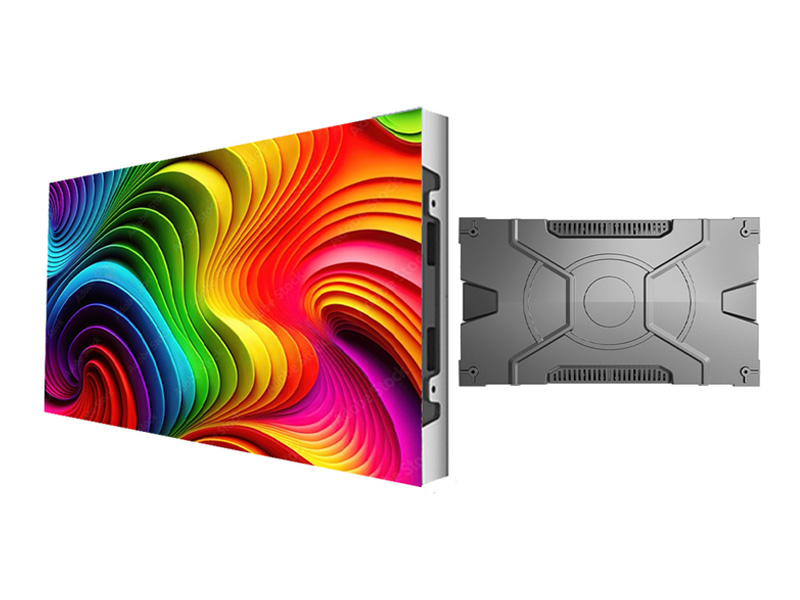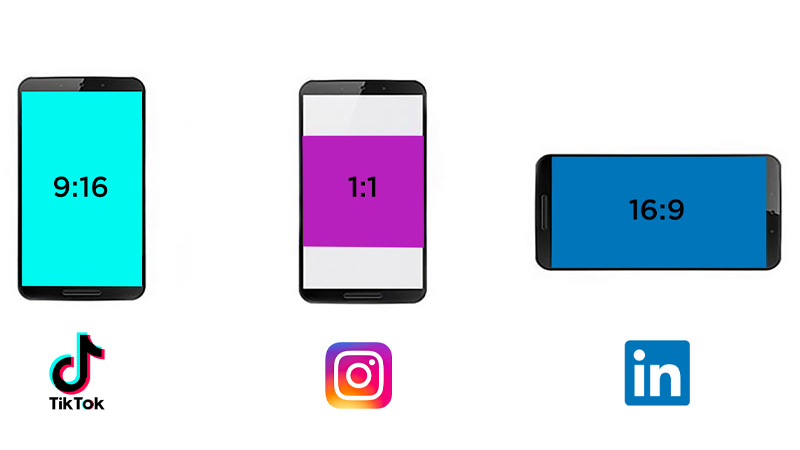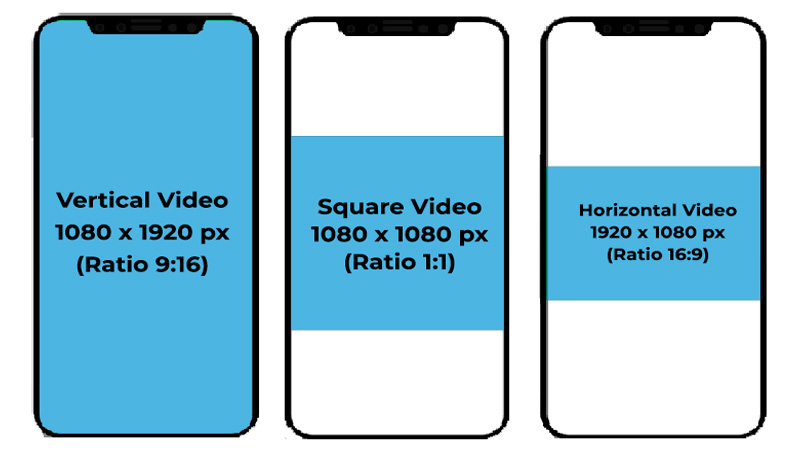Display Aspect Ratios – The Ultimate Guide for Beginner
Aspect ratios are the term used to denote rations involving many geometric shapes. In simplest terms, aspect ratio is the proportional relationship of geometrical sides, namely, width to height.
In video, this refers to the proportion of width and height, which allows you to create a video without distortion and put what you want in the frame.
In this guide, we will discuss everything you need to know about aspect ratios and why it is crucial to consider them when creating videos and content.
The display aspect ratio is the screen of a particular medium that shows the video. In the past, the size of the medium itself determined the actual size of the video, like in television and silver screens.
Gadgets and computers today allow you to have a different aspect ratio despite having a fixed display aspect ratio.
Let us see the development of aspect ratio over time.
The concept of aspect ratio is inextricably linked with scientific progress and technological innovation. It emerged with the invention of motion pictures and the emergence of film as an art form and entertainment.
The first silent film using 35 mm exhibits a ratio of 4:3. It evolved through the years; Cinerama, for instance, offered a wide picture with an aspect ratio of 2.59:1 to address declining movie ticket sales, while HDTV in the late nineties had an aspect ratio of 1.78:1.
With the emergence of gadgets, you need other aspect ratios. Since there are many things to consider (hand-held, software limitation, etc.), the operating dynamics differ from those used in cinemas and television.
Understanding aspect ratio formats is crucial because they enhance the viewing experience and help filmmakers and those in the visual arts create aesthetically pleasing material.
-
3.1 How to Calculate Aspect Ratio?
The key is having the right proportion for your video, but how do you calculate it? You do it through ratio. It is relatively simple. You divide the width and height by the greatest divisor; the result is your aspect ratio. For instance, if you have 640×480, you get 120 as the highest divisor and 4:3 as the aspect ratio.
-
3.2 Common Aspect Ratio Formats
Since the inception of cinema, various Aspect Ratio formats have become a common staple despite continuous innovation and technological advancements. Among these are:
![]() 4:3: It has been a more common staple throughout the last century. It is the aspect ratio most adapted to the film medium. It became firmly entrenched with the emergence of television, which, in more ways than one, is almost like cinema in both production and viewing experience.
4:3: It has been a more common staple throughout the last century. It is the aspect ratio most adapted to the film medium. It became firmly entrenched with the emergence of television, which, in more ways than one, is almost like cinema in both production and viewing experience.
![]() 16:9: This aspect ratio is the standard for most televisions and computer monitors. It is ideal for digital images, and it is not surprising that it has become more common today.
16:9: This aspect ratio is the standard for most televisions and computer monitors. It is ideal for digital images, and it is not surprising that it has become more common today.
![]() 9:16: It is the standard display aspect ratio of most smartphones and ideal for most social media platforms, such as TikTok and Facebook stories.
9:16: It is the standard display aspect ratio of most smartphones and ideal for most social media platforms, such as TikTok and Facebook stories.
![]() 2.35:1: It is a vast improvement on the 4:3, allowing a larger view, and has become one of the best choices for widescreen.
2.35:1: It is a vast improvement on the 4:3, allowing a larger view, and has become one of the best choices for widescreen.
-
3.3 Examples for each Aspect Ratio format
For 4:3, a standard television during the 20th century was the best example, along with the silver screen in the movie houses. Meanwhile, television in the digital age and most computer monitors we use today are of the 16:9 variety.
Your smartphone, viewed vertically, is in 9:16 format. However, the view will change if you move it horizontally. Depending on what video you want to watch or create, you can customize it in 9:16 or a different aspect ratio.
Have you watched any Blu-ray films on a widescreen? That uses a 2.35:1 aspect ratio. If you watch movies from the past and ones on Blu-ray using this aspect ratio, the different viewing experience is evident.
Tied to the aspect ratio are concepts that affect the quality of a particular image or video. The material must be of proper size and have enough “texture” not to compromise the quality of the material and the viewing experience.
You might be familiar with the word “resolution” used in videos and images. Resolution is the given number of pixels per unit of measurement. A pixel is the number of squares that make up an image on a computer screen. All digital images are composed of pixels.
So, what’s the connection? Try watching a high-resolution DVD on an old television, and the result is unpleasant. The device’s aspect ratio is unsuitable for the number of pixels, so you have a distorted video.
The correct aspect ratio is essential. Let us go deeper.
-
4.1 Aspect Ratio vs Pixels and Capture Rates
Aspect ratios determine these sizes. Wider aspect ratios mean you can have larger sizes without sacrificing image quality. Still, it will depend on the number of pixels an image has. An image may be large but needs more pixels to be high quality.
-
4.2 Aspect Ratios vs. Image Sizes and Photograph Sizes
Aspect ratios determine these sizes. Wider aspect ratios mean you can have larger sizes without sacrificing image quality. Still, it will depend on the number of pixels an image has. An image may be large but needs more pixels to be high quality.
-
4.3 Aspect Ratios vs Video Resolutions and Video Size
High-resolution videos have more pixels and thus require wider aspect ratios for better resolution and viewing experience. They are also usually larger than standard ones.
Therefore, an aspect ratio that can provide space for high-resolution videos is necessary both to avoid distortion and to optimize the medium for better viewing pleasure.
Indoor led displays, for instance, can provide an exhilarating viewing experience for the public, which video makers can use to showcase their skills. Most have a 16:9 aspect ratio, optimizing the latest technology and providing high-quality visual displays, perfect for advertising and live streaming events.
Indoor Display XA600-Series
![]() Front-end Convenient Maintenance
Front-end Convenient Maintenance
![]() Cabinet Size: 600*337.5mm/16:9 Ratio
Cabinet Size: 600*337.5mm/16:9 Ratio
![]() Compatible with 300*168.75mm Module
Compatible with 300*168.75mm Module
![]() With 3 Years Warranty and 5% Spare Parts
With 3 Years Warranty and 5% Spare Parts
Indoor Display SA600-Series
![]() Front-end Convenient Maintenance
Front-end Convenient Maintenance
![]() Cabinet Size: 480*320mm/3:2 Ratio
Cabinet Size: 480*320mm/3:2 Ratio
![]() Compatible with 320*160mm Module
Compatible with 320*160mm Module
![]() With 3 Years Warranty and 5% Spare Parts
With 3 Years Warranty and 5% Spare Parts
So, what aspect ratio should you choose? It depends on what videos you are making, your technology, and the medium you will use.
Filmmakers, content creators, documentarists, and advertisers use different aspect ratios depending on what mediums and platforms require. Before knowing the different aspect ratios you can use, you must learn how to judge the aspect ratio of a video.
-
5.1 How to Judge Aspect Ratio of Video.
The primary consideration is having a perfect match between your video and aspect ratio. Since viewers hate watching distorted videos, you must know which one fits.
If you are making a film, it is better to use the industry standard, but if you want to stream it online, you can use 16:9 or even 2.35:1 or its variation.
Content creators use different platforms, and though the standard for computers is 16:9, others might be better than if you create content for specific platforms such as TikTok, which usually caters to smartphone users.
Knowing different aspect ratios for specific devices is, therefore, imperative.
-
5.2 Aspect Ratios for Different Video Devices
Here are the various aspect ratios for different devices and platforms:
![]() YouTube: 16:9
YouTube: 16:9
![]() TikTok: 9:16
TikTok: 9:16
![]() Film: 1.85:1 and 2.40:1
Film: 1.85:1 and 2.40:1
![]() iPhone: 9:16 (Vertical), 19.9 (Horizontal)
iPhone: 9:16 (Vertical), 19.9 (Horizontal)
![]() Television: 16:9
Television: 16:9
![]() Imax: 1.43:1, 1.90:1
Imax: 1.43:1, 1.90:1
![]() Commercials Online: 16:9
Commercials Online: 16:9
![]() Live Streaming: 16:9 and 4:3
Live Streaming: 16:9 and 4:3
-
5.3 Aspect Ratios for Gaming and Filmmaking
16:9 is the standard for gaming, but it can go as wide as 32:9, depending on the types of games you are playing. For film, it will ultimately depend on the nature of the video and the medium. Imax, for instance, has a different aspect ratio from the standard in the industry.
-
5.4 Best Aspect Ratio for Video
As you can see, the aspect ratio ultimately depends on the medium. The best, therefore, is one that can accommodate your video without distortion and with a clear resolution.
-
5.5 Video Aspect Ratio Conversion
Converting your video to a desirable aspect ratio is possible. Certain apps online allow you to do so, but it is still subject to certain factors.
The nature of the video itself may preclude converting to an aspect ratio without distortion, especially if it was created for 4:3 and is in low resolution. Certain limitations also exist due to the video’s size, the medium’s dimensions, or the platform.
Understanding aspect ratio allows you to create a video that will look good on whatever medium you want it played. It is best for enhancing the viewer’s experience. If you can create a great video, you can increase your chances of having better engagement.
-
6.1 What is aspect ratio?
The aspect ratio is the proportion of width to height, and it has been essential in creating videos ever since.
-
6.2 What is the most common aspect ratio format?
16:9 is the most common, owing to the devices and platforms that use it. Others are 9:16, 4:3, and 2.35:1.
-
6.3 Can you convert your video to the desired aspect ratio?
Yes, mainly using apps. However, the quality will depend on other factors.
-
6.4 What is the aspect ratio of most smartphones?
Most smartphones have an aspect ratio of 9:16 (vertical) and 16:9 (horizontal).
Contact
 Building D, Hongfa Science Park,
Building D, Hongfa Science Park,
2035 Songbai Road, Shiyan, Bao’an District, Shenzhen, Guangdong, China.

